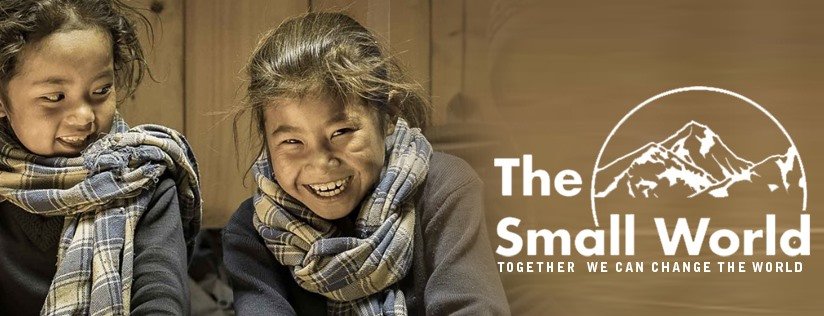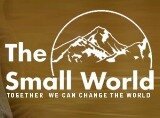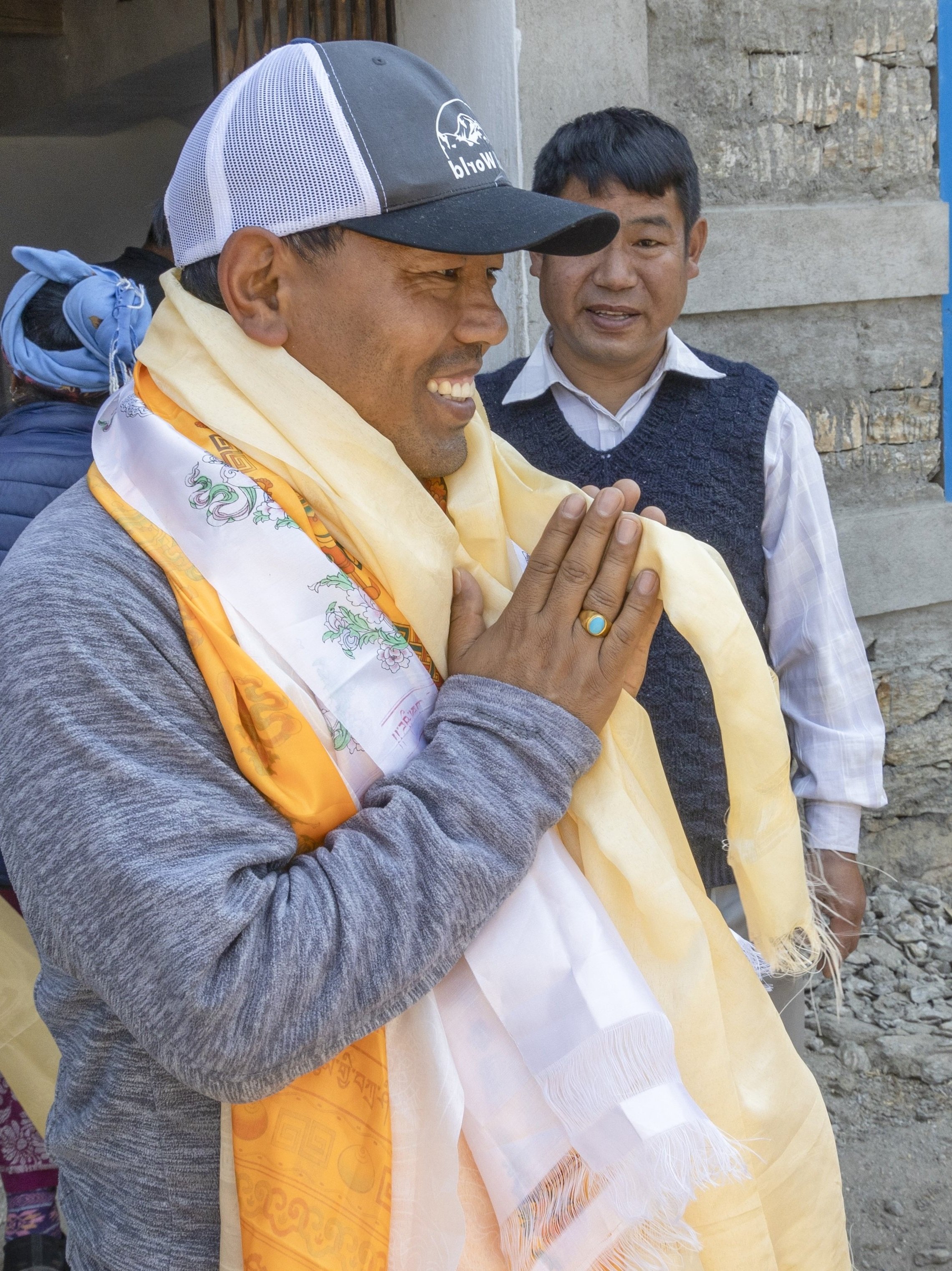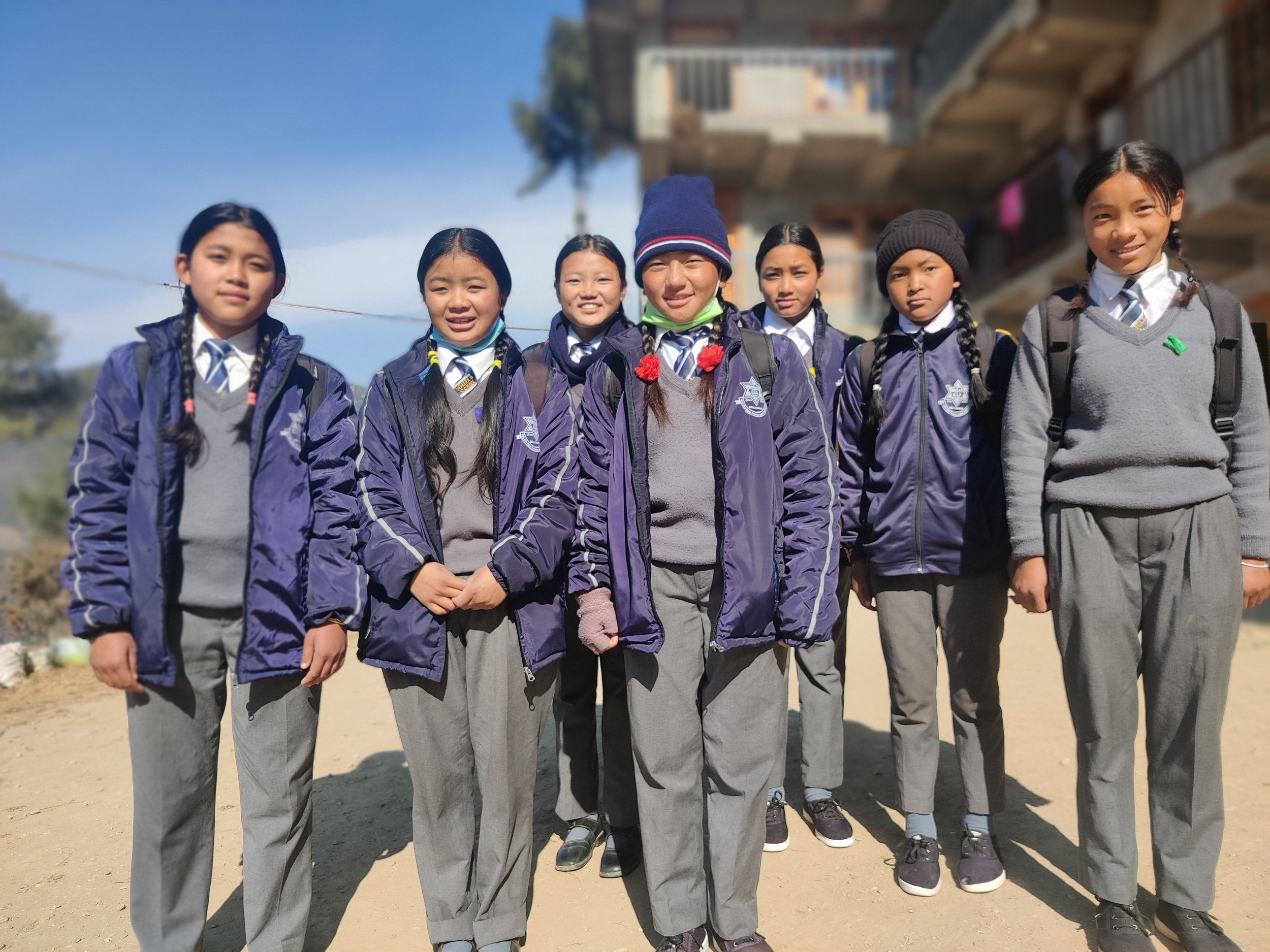The Small World
When, What, Why, How, &
Where Are We Going?
There have been so many people over the past 17 years - sponsors, volunteers, friends, strangers, workers, even locals - who have asked questions such as, “Why are you doing this?” or “How did it all happen?” and “Where are you going with this?” Being grateful for such interest, I’m honoured to tell you my story, from the beginning to today.
THE BEGINNING
It was in a remote Nepalese village in Solukhumbu, called Taksindu, that I was born; as the eleventh child, my mother could only remember that it was “when it began to get cold.” With twelve children in the family, competition for food was fierce. Fortunately, we had some cattle, and my parents - with a couple of the older children - lived nomadically to maintain them. It was a hand-to-mouth existence, we froze in the winter, and I desperately wanted to join a monastery and never be hungry again.
Since Taksindu was next to a trekking path to Everest, my oldest brother, who had left for Kathmandu to become a porter, stopped at our shelter one day with his trekking group. I was seven years old then and I remember innocently staring at them with big eyes and smiles. Now, of course, I realize they were horrified by the very sight of us – a bunch of rather ragged, grubby, hungry-looking kids who were obviously not in school.
LUCK OF THE DRAW
At the trek’s end, his clients insisted on thanking my brother for taking such good care of them. My parents and brother were amazed when they said they would sponsor schooling for one of us, which was $100 a year! After some discussion, my brother and parents decided on me because, as the second youngest, I was not very useful at home, anyway!
I had no idea what school was, but I walked an hour every day and applied myself as best I could, that is, when there were not too many chores at home - because those came first. After grade 5, at age thirteen, I wanted to move to Kathmandu to continue learning while staying with my porter brother. In the big city, I began to learn English for the first time in a much more advanced educational system.
POWER OF EDUCATION
It was all quite a challenge that included still struggling for enough food, but I was most grateful because, through it all, that same trekking group, (which had expanded to include even more trekkers and kind travelers) continued to support my education – even through college, which was the ultimate gift to empower my future. Toward the end of college, a lecture by some financial officers impressed me so much that I resolved to become a banker to fulfill my dreams and finally be able to support my family.
In 2005, I finished my bachelor’s degree in Business Management and was on my way. The exam results would take about four months so, in the meantime, I figured I would go back to Taksindu and volunteer to teach English at the local school.
AN UNEXPECTED CHALLENGE
When I arrived in Taksindu, the villagers welcomed me like a hero or even a god; it was shocking, but then I realized that it was an amazing thing for people in this tiny and remote Himalayan village to have one of their own even go to Kathmandu (it was a nine-day walk) and, even more amazing, to finish college there.
Everyone was incredibly gracious to me, constantly offering food and tea, asking all about all the places in Kathmandu – the Buddha stupas, and Monkey temples, with great curiosity about everything, including what it was like to be in a car, or a taxi, or inside all the amazing places there. They thought I was very powerful, but I was embarrassed; I felt like a fake because I did not think I had changed at all!
Unfortunately, the school was falling apart and so unsafe that it closed often. The villagers were panicking because the government teachers were threatening to leave, so they started asking if I could please help them build a school for the children.
But for me, a harsh reality was closing in and I was completely confused; I did not know what to do next, I had no money, and I had no idea where or how to get a job. In addition, my family was expecting me to help them financially and with their own dreams. And the villagers, always offering tea and food, continued their fervent pleas for me to help build a school.
SUPPORT AND MOTIVATION
In the middle of my confusion, their genuine love and trust began to give me hope that maybe I should at least try to help, although I had no idea how to build a school. My next step was to get a few of the locals together and ask them for their ideas on how to build a school and what we needed. They already knew what we would need in terms of materials like stone, wood, skilled workers, and funding. And among them were a few skilled workers we would need.
What also motivated me was that virtually nothing had changed in the village; there were still so many children who were enduring the same difficulties that I had left behind. I felt emotional and so grateful that someone had helped me to get an education; it had made all the difference in my life. Right then, I resolved to thank my supporters in some way by beginning to help build this school. I thought by continuing what they did for me was the best way to thank them.
RESOLUTION
With my degree in business, the natural next step was to get a loan to build the school. Next, I would go back to Kathmandu, repay the loan, and take care of my family. But in the real world, a loan was impossible with no collateral, especially for the sum of $6,000 needed to build the seven-room school. The situation got even more complicated, but I was not going to give up hope. Back in Kathmandu, I told everyone I could about the project, even strangers, hoping for support or some ideas. Then someone told me about nonprofit status to help with funding.
I immediately researched it and the process of registration. We needed six people, so I invited some from the Taksindu area, some from college, and some trekking guides; together, we got the nonprofit established in 2005 and named it “Taksindu Social Welfare.”
Later, as we expanded our charitable works and the areas impacted, TSW became The Small World.
AND TODAY…
What has resulted is that our work for these communities became a role model for change. Because they know me, and because we share language and similar backgrounds (since my story was worse or at least a match for theirs), they directly experienced the power of what an education can provide for someone just like them. They were eyewitnesses to the potential of helping others through joining with the international community for development aid.
As projects continued, I found it was important to stress to villagers the value of frugality with the funding that we receive. To establish this, I got the idea to make the projects a matter of true ownership for them. They work for weeks and months on the projects, so emphasizing their taking responsibility and ownership of it not only considerably empowers them but also ensures the project’s continued sustainability.
Every day, I feel joyful and so grateful for my work and how, with the generosity of our wonderful sponsors, friends, and volunteers, we are changing the lives of so many others for the better. In fact, it does not even feel like “work” to me. Of course, there are always problems and challenges, but we have focused on using those to create more solutions and ideas and generate more efficiency and progress. Over the years, our projects have indeed become more efficient.
This is also due to The Small World’s very different approach from other nonprofits. Instead of independent planning that can lead to faulty understanding and less than maximum results, we know it is essential to discuss with the locals their needs and ideas for the project because we believe they know best. Then, in accord, we plan the project together and participate with them in all aspects of the project, working “shoulder to shoulder” from beginning to end. As for the sponsors, we encourage and want them to participate with the project and local people in whatever way they prefer.
THE FORK IN THE ROAD
Here I was - a boy from a poor village with a rather hopeless future, gifted with a life-changing education from kind travellers, then back to volunteer in the same poor village; while there, galvanised by locals to help build a school, and the path my life took as a result.
I only meant to build that one school, but the journey so far has resulted in so much more: the construction of more than 15 schools, benefiting more than 7,000 children, plus much more: locally-driven sustainable projects like safe drinking water; sanitation; agriculture; women’s empowerment programs; and a free remote Medical Camp, all of which benefit over 10,000 local community members every year.
I could never have imagined then what I would be doing today, and I have only the villagers to thank for their trust and confidence in me. My destiny has been due entirely to these people who showed me the way to this most rewarding journey. I feel very blessed because they are very happy with my work, but it is me who is most indebted to them.
ON A PERSONAL NOTE
In 2009, I had the good fortune to marry my beautiful wife, Sonam Sherpa, a pediatric nurse, who continued her education to graduate in Public Health after our marriage. Many would consider it fate or serendipity that Sonam is also from Solukhumbu and, like myself, also had her education paid for by trekkers to Everest! Together, with the same background and good fortune, we feel like a very powerful team that was meant to be doing what we are today.
Sonam is a most valuable partner in The Small World and focuses on Women’s Empowerment, but she works together with me on so much more. We have three beautiful children who also volunteer on project sites; whenever they have a school holiday, we trek to the mountains to connect and familiarize them with our origins. They have seen and understand the value of helping others and the value of education. In short, we are very blessed.
Karma, Sonam and their daughter and son at Mardi Himal in 2022
WHERE WE ARE GOING
Today, we are moving forward in building strong leadership within the community, a goal made possible with the gift of education. Every child and every girl that we have supported is highly motivated to give back; they are replacing TSW as their temporary role models, taking up the banner, so to speak, as the ideal role models for their communities as leaders and influencers.
We can proudly share today that over two dozen of our graduated girls are teaching in many remote village schools; over a dozen are nurses providing much-needed health services in remote communities; a few are in local businesses; some are political leaders; and some are even government officials, etc.
Through my own and Sonam’s example, we truly believe that to educate a child is to educate the world; and logically, we also believe that empowering/positively changing a local community can also mean changing the world.






